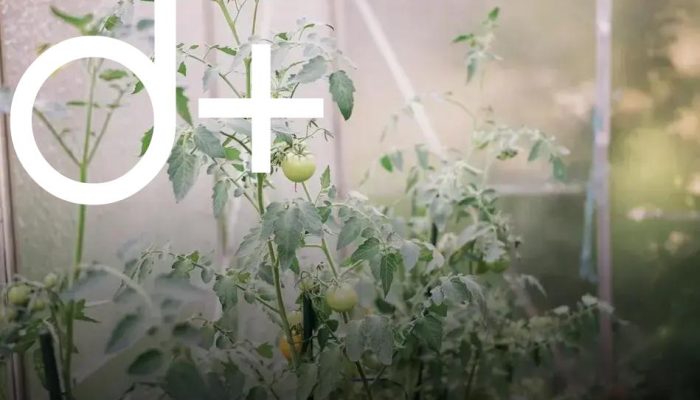Water-saving gardening is essential for creating a beautiful, drought-resistant yard. By understanding your local climate and soil conditions, you can choose the right drought-tolerant plants that thrive without excessive watering. This article offers practical tips, from efficient irrigation techniques to using mulch for moisture retention, guiding you towards a sustainable and lush garden that conserves water efficiently.
Understanding Your Soil and Climate
To create a water-saving garden, it’s essential to understand the characteristics of your soil and the climate in your area. Different soil types, such as clay, sandy, and loamy, each retain water differently and influence how well plants can absorb it. Testing your soil allows you to determine its composition and how it affects water retention.
Clay soil tends to hold water but drains poorly, which can lead to root rot. In contrast, sandy soil drains quickly, often too fast for plants to absorb the necessary moisture. Loamy soils are generally ideal for most plants, offering a balance of water retention and drainage.
Knowing your local climate is just as crucial. Identify the average rainfall and temperature patterns. This will help you choose plants that thrive in those conditions and plan your watering schedule accordingly. Areas with hotter and drier climates benefit from drought-tolerant plants and efficient watering methods.
Understanding microclimates within your garden can play a big role in water-saving efforts. Pay attention to sunny, shaded, windy, or sheltered spots – these affect how much water your plants will need. For instance, areas that get more sun might require more frequent watering.
Soil Conservation Practices
Implementing soil conservation practices can enhance water retention. Adding organic matter like compost improves the soil structure and its ability to retain moisture.
Choosing the Right Drought-Tolerant Plants

In a water-saving garden, selecting the right drought-tolerant plants is crucial. Begin by examining your local climate and soil conditions to determine which species are most suitable. While native plants often adapt well to the local environment, you’ll find a wide variety of options that thrive with minimal water.
Succulents, such as agave and aloe, are excellent choices. These plants store water in their leaves, making them ideal for hot, dry climates. Similarly, cacti offer striking shapes and require little attention once established. They can survive with very little water, providing both aesthetic appeal and practicality.
For a touch of color, look to lavenders or sages. These flowering plants not only resist drought but also attract pollinators to your garden. Lavenders’ fragrant blooms can transform your yard into a tranquil oasis while requiring less water than many traditional garden plants.
If you desire ground cover, consider creeping thyme or woolly yarrow. These grow low to the ground, helping to cover soil and reduce evaporation. They also add texture and are resilient to drought conditions. Another notable option is ornamental grasses like blue fescue or feather reed grass. These grasses bring movement and structure to your garden and withstand extended dry spells.
Group plants with similar water needs to optimize your irrigation efforts. This strategy not only conserves water but also ensures that each plant receives adequate moisture without overwatering. Explore a variety of drought-tolerant options to create a lush, diverse landscape that can withstand dry periods efficiently.
Efficient Irrigation Techniques
Implementing efficient irrigation techniques is vital for maintaining a drought-resistant yard. Start by installing a drip irrigation system, which delivers water directly to the plant roots, minimizing evaporation and runoff. This not only conserves water but also ensures that your plants receive the moisture they need.
Utilize soil moisture sensors to monitor the level of moisture in your garden. These sensors can automate your irrigation system, watering plants only when necessary. This prevents overwatering and helps save water.
Consider watering your garden either early in the morning or late in the evening to reduce water loss due to evaporation. Windy conditions can also affect irrigation efficiency, so it’s best to water on calm days.
Diverse strategies, such as grouping plants with similar water needs, can further enhance efficiency. By doing so, you can customize your irrigation schedule according to the specific requirements of each zone, avoiding unnecessary water usage.
Remember to regularly check for leaks or blockages in your irrigation system to ensure that it operates effectively. These simple adjustments can greatly contribute to a more sustainable and water-wise gardening practice.
Using Mulch to Retain Moisture

The strategic application of mulch in your garden is key to conserving water, especially in drought-prone areas. Mulch acts as an insulating layer on top of the soil. This layer helps reduce water evaporation, keeping the soil moist for a longer duration. By doing so, you lower the need for frequent watering, saving both water and time.
There are various types of mulch to consider, including organic options like bark chips, straw, or grass clippings, and inorganic choices such as rocks or landscape fabric. Organic mulches are especially beneficial as they break down over time, enriching the soil with nutrients.
Apply mulch around your plants, being careful not to pile it too high against the stems, as this could lead to rot. The recommended layer of mulch is about 2 to 4 inches thick. This thickness is sufficient to block sunlight from reaching the soil surface, thereby preventing weed growth, which further competes for water resources.
In addition to moisture retention, mulch also provides insulation against temperature extremes. During hot weather, it keeps the soil cooler, while in cooler months, it helps retain warmth. This makes mulch invaluable not just for water conservation but also for maintaining a stable environment for plant roots.
Consider the local climate and the types of plants in your yard when choosing the appropriate mulch. For areas with heavy rainfall, opt for heavier mulches that won’t easily wash away. In dry climates, lighter, fluffy mulches can help retain needed moisture.
Sustainable Lawn Alternatives
For a greener approach to gardening that conserves water, consider switching to sustainable lawn alternatives. These alternatives offer visually appealing and eco-friendly solutions that require significantly less water. For instance, you can use clover lawns. Clover is drought-tolerant, stays green year-round, and naturally attracts pollinators.
Ground Covers
such as thyme or sedum provide excellent coverage, reducing the need for frequent watering and mowing. Many ground covers offer the added benefit of fragrant blooms.
Consider ornamental grasses which thrive in dry conditions and come in various heights and textures. They provide visual interest and require minimal maintenance. Alternatively, you can use hardscaping techniques like gravel, pavers, or stones to create pathways that reduce lawn size while adding design elements to your garden.
Additionally, incorporating native plants helps in creating a sustainable lawn. Natives are well-adapted to your local climate and soil conditions, needing less water and care. They offer habitat value to local wildlife, enhancing the biodiversity of your environment. Transitioning to these options not only conserves water but also contributes positively to an ecosystem-friendly garden. Replacing traditional turf with these alternatives can yield an attractive and environmentally sound outdoor space without compromising on beauty or functionality.







![BANNER 1 - HOME [QUADRADO]](https://dailyfindinvestment.com/wp-content/uploads/2025/01/BANNER-300-X-300.gif)
